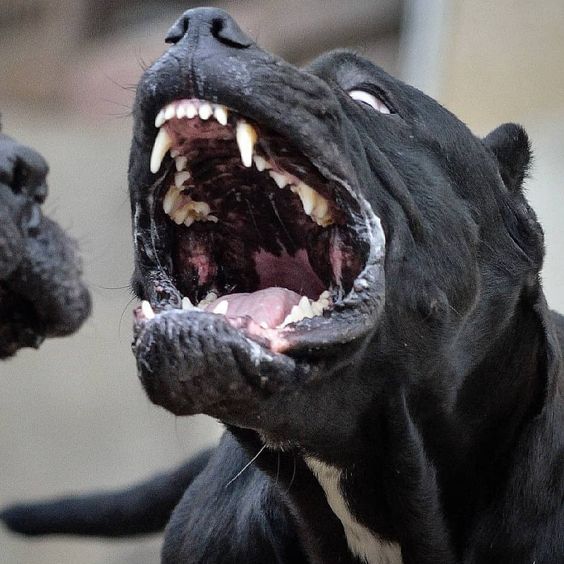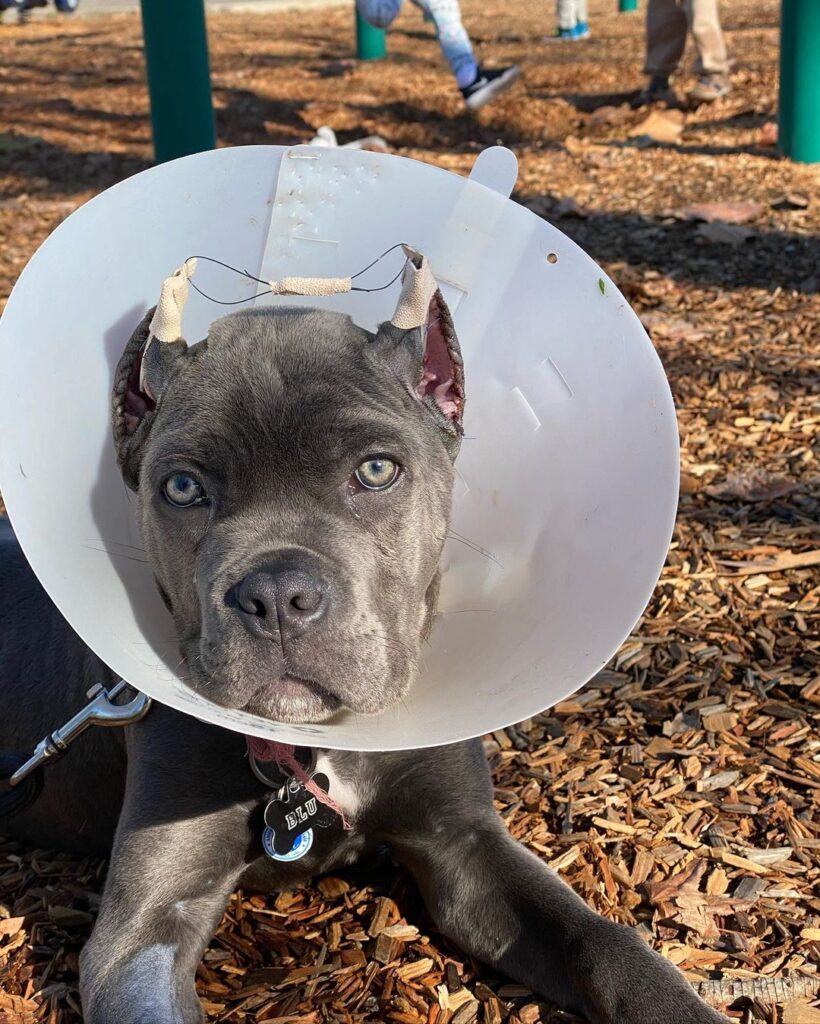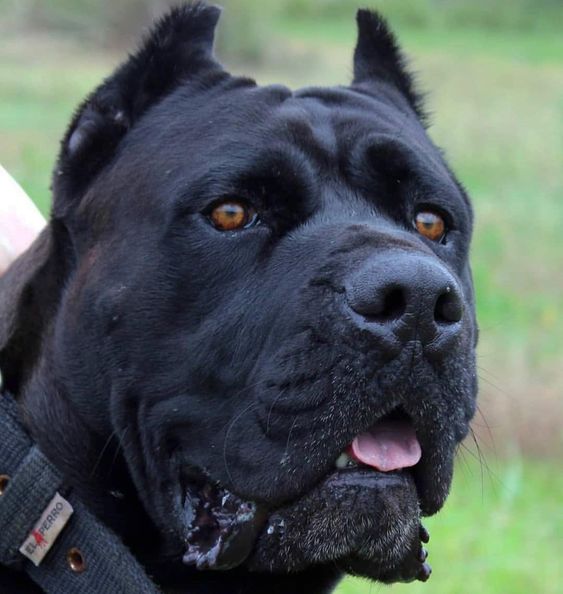
Cane Corsos are powerful and imposing dogs known for their protective instincts. However, even the most well-trained dogs can sometimes bite, and when a Cane Corso bites, it can be a serious matter. In this article, we will discuss what to do if you or someone you know is bitten by a Cane Corso. We’ll cover immediate first aid, seeking medical attention, documenting the incident, reporting the incident, legal considerations, and address the question of whether a Cane Corso can kill a human. “6 Steps To Do If A Cane Corso Bites You”
Don’t Panic
When faced with a Cane Corso bite, it’s entirely natural to feel a surge of fear and adrenaline. However, the first and most crucial piece of advice is this: Don’t panic. Panicking can only worsen an already stressful situation. Instead, take a deep breath and focus on the immediate steps you need to take.
Remember, your calmness can have a calming effect on the situation itself. By staying composed, you can make more rational decisions, assess the situation accurately, and ensure your safety as well as the safety of others involved.
Recognize the Severity
The next step after ensuring you remain calm is to recognize the severity of the Cane Corso bite. Not all bites are the same, and their severity can vary widely. Take a moment to assess the injury.
Minor bites may involve superficial skin wounds with minimal bleeding, while major bites can result in deep puncture wounds and profuse bleeding. Understanding the severity is essential because it will help you determine the appropriate level of medical attention required.
In addition to examining the physical injury, consider the circumstances surrounding the bite. Was the dog provoked? Did it appear aggressive before the bite? Such details can be vital in assessing the overall seriousness of the situation.
Safely Separate
Once you’ve assessed the severity of the bite and your immediate safety, it’s crucial to safely separate yourself from the Cane Corso. If the dog is still aggressive or agitated, creating distance between you and the animal is paramount.
If possible, find a barrier or object to put between you and the dog. Avoid making sudden movements or loud noises that might further provoke the animal. Remember that a Cane Corso’s temperament can vary, and it’s essential to prevent any escalation of the situation.
By safely separating yourself from the dog, you reduce the risk of additional injuries and create a safer environment for everyone involved. This step is crucial before proceeding with first aid and seeking medical attention, ensuring that you prioritize safety above all else.
Immediate First Aid
When dealing with a Cane Corso bite, it’s imperative to provide immediate first aid to the victim. This initial response can significantly impact the outcome of the injury. Here’s what you should do right away:
Clean the Wound
After a Cane Corso bite, the first step is to gently clean the wound. Use mild soap and warm water to wash the affected area thoroughly. Cleaning the wound helps remove dirt, bacteria, and saliva that may have entered the skin during the bite.
While cleaning, be sure to inspect the wound for any foreign objects, such as dirt or debris, and remove them carefully. It’s essential to be gentle to avoid causing further damage to the injured tissue.
Bandage the Wound
After cleaning the wound, the next step is to bandage it to protect it from further contamination and to control any bleeding. Here’s how to properly bandage a Cane Corso bite wound:
- Sterile Dressing: Use a clean, sterile dressing to cover the wound. Make sure it fully covers the injured area and extends slightly beyond the edges.
- Secure with Bandage: Use a bandage or gauze wrap to secure the dressing in place. Start the wrap away from the wound and gradually move towards it, ensuring a snug but not overly tight fit.
- Monitor Bleeding: Check for any bleeding. If bleeding continues, apply gentle pressure with a clean cloth or gauze pad until it stops.
- Elevate if Possible: If the bite wound is on a limb, elevate that limb slightly to reduce swelling.
- Do Not Use Adhesive Tape Directly on the Wound: Avoid placing adhesive tape directly on the wound as it can be painful and may damage the skin further.
Properly bandaging the wound is essential to prevent infection and minimize the risk of complications. Remember that even if the wound appears minor, it’s crucial to seek medical attention to assess the injury thoroughly, especially for potential damage beneath the skin’s surface.
By following these immediate first aid steps of cleaning and bandaging the wound, you can provide the victim with necessary initial care, promoting a smoother recovery process.
Seek Medical Attention
Seeking immediate medical attention is a crucial step after a Cane Corso bite, regardless of the bite’s apparent severity. This is not a situation where you should adopt a “wait and see” approach. Here’s why it’s so essential:
Consult a Healthcare Professional
The first and most critical reason to seek medical attention is to have the bite assessed by a healthcare professional. Cane Corso bites can vary in severity, and even seemingly minor wounds can hide more extensive damage beneath the surface.
A healthcare professional, typically a doctor or nurse, will examine the wound, clean it properly to prevent infection, and assess the potential for deeper tissue or nerve damage. They may recommend further treatments like tetanus or rabies vaccinations, antibiotics to prevent infection, or even sutures to close the wound, depending on the bite’s severity.
Discuss Potential Complications
Another significant reason to consult a healthcare professional is to discuss potential complications that may arise after a Cane Corso bite. Even seemingly minor injuries can lead to serious problems if left untreated.
One of the primary concerns is the risk of infection. Dog saliva contains bacteria that can cause infections in bite wounds. These infections can range from mild skin infections to more severe deep tissue infections that can lead to complications such as cellulitis or abscesses.
Additionally, bites near joints or tendons can result in mobility issues if not treated promptly and appropriately. Nerve damage is also a possibility, which could lead to long-term sensory or motor problems in the affected area.
By consulting a healthcare professional, you not only address immediate concerns but also gain valuable insights into the potential long-term consequences of the bite. Early treatment can prevent complications, reduce pain, and ensure a quicker and more successful recovery.
Document the Incident
When dealing with a Cane Corso bite, documenting the incident is not just a formality; it’s a crucial step that can have a significant impact on legal and medical proceedings. Here’s how to go about it:
Gather Information
Start by gathering all the relevant information about the incident. This includes:
- Details of the Bite: Note the date, time, and location of the incident. Describe how the bite occurred and who was involved.
- Dog Owner’s Information: Obtain the name and contact information of the Cane Corso’s owner if possible. This information is crucial for reporting and potential legal actions.
- Witnesses: If there were any witnesses to the incident, get their names and contact details as well. Their statements can be invaluable in establishing what happened.
- Injury Details: Document the extent of the injuries. Take photographs of the bite wounds from multiple angles, as well as any torn clothing or objects damaged during the attack. Visual evidence can be highly persuasive.
Preserve Evidence
Preserving evidence is essential for both medical and legal purposes. Here’s how to do it effectively:
- Keep Torn Clothing: If your clothing was torn during the incident, do not discard it. Preserve it as evidence of the attack.
- Maintain a Detailed Account: Write down a thorough and accurate account of the events leading up to the bite and everything that happened afterward. Include your actions and the dog’s behavior.
- Photographic Evidence: Take clear and well-lit photographs of the bite wounds. Include a reference point, such as a ruler, in the photos to provide a sense of scale.
- Medical Records: Keep copies of all medical records, including bills, diagnoses, and treatment plans. These documents are essential for insurance claims and legal proceedings.
By gathering and preserving this information and evidence, you are not only helping yourself but also contributing to public safety. Proper documentation can aid in determining liability, ensuring that the dog owner is held accountable for the incident, and assisting healthcare professionals in providing appropriate treatment.
Report the Incident
Reporting a Cane Corso bite incident is a crucial step in ensuring the safety of the community and addressing the consequences of the attack. Here’s what you need to know about reporting the incident:
Notify Animal Control
One of the first authorities you should contact after a Cane Corso bite is your local animal control agency. Reporting the incident to them helps ensure that the dog is properly assessed and its owner held accountable if necessary.
Animal control officers are trained to handle situations involving dangerous animals. They can investigate the incident, assess the dog’s behavior, and take appropriate actions to prevent future attacks. This may include quarantining the dog for observation, issuing citations to the owner, or even taking legal measures to remove the dog from the community if it poses a significant threat.
Legal Considerations
After a Cane Corso bite, several legal considerations come into play, both for the victim and the dog’s owner. Understanding these legal aspects is essential:
Liability
Dog owners are typically liable for the actions of their pets. If you were bitten by a Cane Corso, the owner may be responsible for your medical expenses, lost wages, and other damages resulting from the bite. Consult with a legal professional to explore your options for compensation.
Dog’s History
The dog’s history of behavior can play a significant role in legal proceedings. If the Cane Corso has a documented history of aggression or previous attacks, it strengthens your case for liability and can influence the dog’s future fate.
Local Laws
Laws regarding dog ownership and liability can vary by location. It’s essential to familiarize yourself with your local regulations and consult with legal experts who specialize in animal-related cases. They can help you navigate the legal complexities surrounding Cane Corso bites.
Can a Cane Corso Kill a Human?

The question of whether a Cane Corso can kill a human is a serious one that deserves a nuanced answer. These powerful dogs are known for their imposing stature and protective instincts. While it’s essential not to demonize the breed, it’s equally important to acknowledge the potential risks involved.
Rare but Possible
It’s crucial to emphasize that fatal attacks by Cane Corsos are relatively rare, but they are not impossible. The breed’s size and strength mean that when a Cane Corso becomes aggressive, it can cause severe injuries. Fatalities have been reported in extreme cases.
However, it’s essential to keep these instances in perspective. The majority of Cane Corsos are well-behaved and well-trained, and fatal attacks represent only a tiny fraction of their interactions with humans.
Prevention is Key
Preventing aggressive behavior in Cane Corsos, as in any breed, is the key to ensuring the safety of both humans and dogs. Here are some preventive measures:
- Proper Training: Cane Corsos should undergo comprehensive obedience training from a young age. This training helps them learn commands, socialize with humans and other animals, and develop appropriate behavior.
- Socialization: Early and positive socialization experiences can significantly reduce the risk of aggression. Exposing the dog to various situations, people, and environments can make them more well-adjusted and less likely to react aggressively.
- Responsible Ownership: Responsible ownership is crucial. Owners should ensure that their Cane Corso receives proper care, exercise, and supervision. It’s also essential to provide mental stimulation to prevent boredom-related behavioral issues.
- Watch for Warning Signs: Owners and caregivers should be vigilant for any signs of aggression and seek professional help if they notice concerning behavior.
FAQs
1. Can a Cane Corso’s bite be lethal?
While rare, yes, a Cane Corso’s bite can be lethal, especially if the dog is exceptionally aggressive or the victim is particularly vulnerable.
2. What should I do immediately after a Cane Corso bite?
After a Cane Corso bite, clean the wound, stop bleeding if necessary, and seek medical attention promptly to assess the injury and prevent infection.
3. Is it necessary to report a Cane Corso bite?
Yes, it’s crucial to report a Cane Corso bite to local authorities, as this helps ensure public safety and may have legal implications for the dog’s owner.
4. Can a Cane Corso’s aggression be predicted?
Predicting a Cane Corso’s aggression can be difficult, but proper training, socialization, and responsible ownership can significantly reduce the risk of aggressive behavior.
5. Are Cane Corsos more dangerous than other dog breeds?
Any dog breed can potentially be dangerous, but Cane Corsos, due to their size and strength, have the potential to cause more severe injuries if they bite.
6. What should I do if the Cane Corso’s owner refuses to cooperate after a bite?
If the owner refuses to cooperate, contact your local animal control or law enforcement, and they will take appropriate action.
7. Are there any specific laws or regulations regarding Cane Corsos in my area?
Laws regarding dog breeds and ownership vary by location, so it’s essential to check your local regulations and consult with legal professionals if needed.
8. Should I take legal action after a Cane Corso bite?
Legal action may be necessary in some cases, especially if the owner is not cooperative or if the injury is severe. Consult with a lawyer for guidance.
9. How can I prevent a Cane Corso from becoming aggressive?
Proper training, socialization, and responsible ownership are key to preventing a Cane Corso from becoming aggressive.
10. What should I do if I suspect a Cane Corso may attack?
If you suspect a Cane Corso may attack, avoid making sudden movements, maintain a calm demeanor, and slowly back away to a safe location.
Conclusion
In conclusion, addressing the aftermath of a Cane Corso bite requires a combination of immediate actions and a well-informed approach. While the likelihood of a Cane Corso causing a fatality is rare, the potential for severe injuries exists, making it crucial to act swiftly and responsibly.
First and foremost, remaining calm and composed when faced with a Cane Corso bite is paramount. Panic can exacerbate the situation, so keeping a clear head is essential. Understanding the severity of the bite, even seemingly minor ones, and providing immediate first aid can significantly influence the outcome.
With over 4 years of devoted companionship with my beloved Labrador Retriever, Robin, I have cultivated a deep understanding and expertise in all things canine. From training and behavior to health and well-being.


